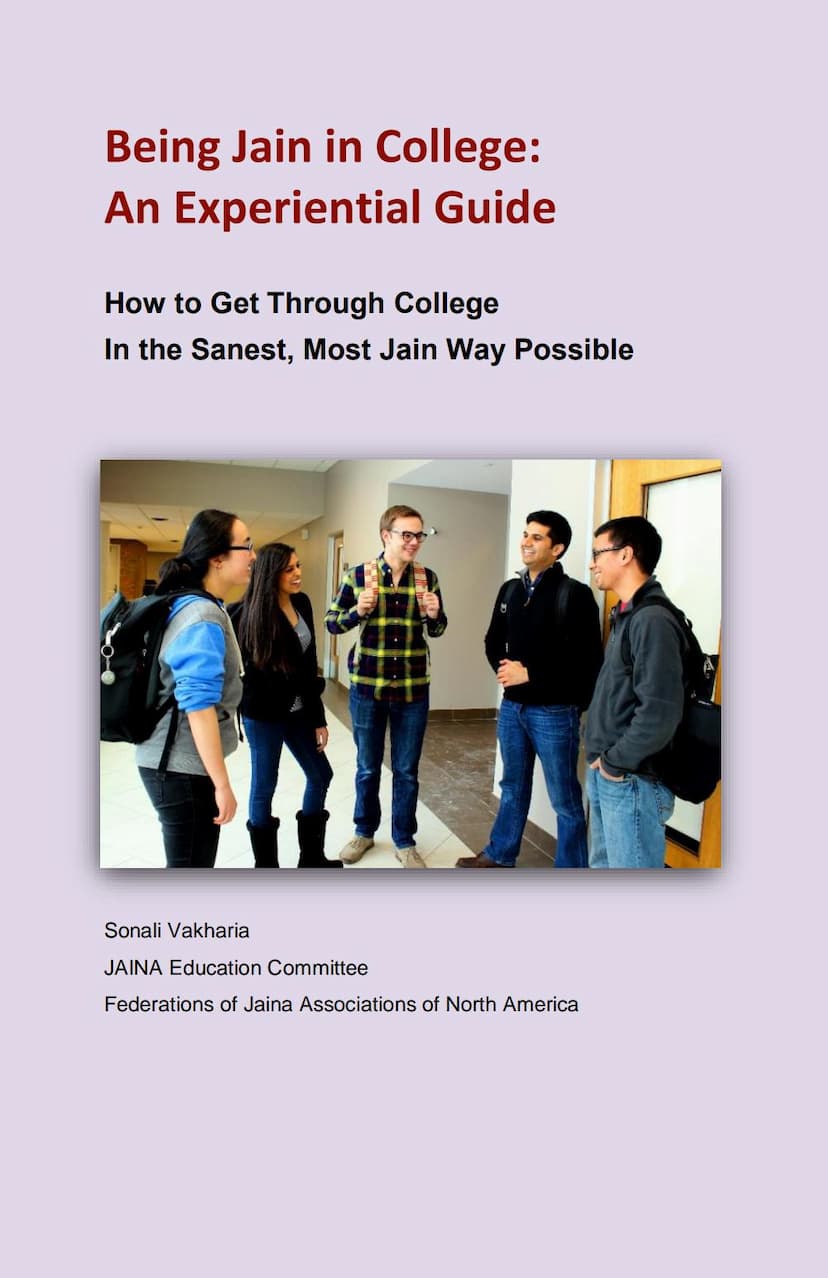JES 983 Being Jain In College An Experiential Guide 2nd Edition
Added to library: September 1, 2025

Summary
Here's a comprehensive summary of "Being Jain In College: An Experiential Guide" by Sonali Vakharia, based on the provided text:
This handbook, published by the JAINA Education Committee, is an experiential guide designed to help Jain youth navigate the complexities of college life while staying true to their values. Author Sonali Vakharia shares her personal experiences and insights to offer practical advice for balancing Jain principles with the challenges and opportunities of a North American college environment.
The book addresses a range of common concerns faced by students, offering a Jain perspective and actionable strategies:
-
Introduction: The author emphasizes that college is a period of significant growth and challenges, but maintaining one's Jain identity is possible. She highlights the importance of learning from experiences, reflecting on mistakes, and understanding that they are not alone, encouraging them to reach out to the Jain community for support. The core message is to strive for self-improvement in every situation, drawing strength from Jain philosophy. The concept of Anekantavada (multiple viewpoints) is introduced as a tool for understanding others and resolving conflicts.
-
Food Availability: This chapter provides practical tips for navigating college cafeterias and dining options while adhering to Jain dietary restrictions (vegetarianism, avoiding root vegetables, etc.). It advises students to identify all food sources, communicate directly with cafeteria staff to request special preparations, get creative with available options, make grocery shopping a positive experience, and even to utilize deep-frozen meals from home. The importance of not compromising on dietary principles due to convenience is stressed.
-
Meeting People: The guide encourages students to be open-minded and proactive in meeting new people, recognizing freshman year as a prime opportunity. It emphasizes the importance of having friends with similar values, while also learning from and respecting those from different cultural backgrounds. The author shares her experience of maintaining friendships despite differing habits and beliefs, attributing this to shared core values. She also cautions against naivety in trusting others and highlights the value of introversion and self-time.
-
Roommates and Dorm Life: This section focuses on building harmonious living relationships in dorms. Key elements discussed include open communication, compromise, tolerance, understanding, respect, and patience. The author suggests proactive communication with roommates about habits and expectations from the start. She also touches on managing differences in lifestyle and respecting personal space, while highlighting the importance of having at least one reliable person in times of need.
-
Relationships: The chapter addresses the social dynamics of college, including peer pressure and the prevalence of dating. It stresses the importance of self-worth, respecting oneself and others, and maintaining personal boundaries. The author advises on building healthy relationships based on mutual understanding, trust, and respect, and offers guidance on navigating the dating scene, emphasizing authenticity and self-love. From a Jain perspective, it touches upon Brahmacharya (chaste living) and the importance of controlling desires.
-
Time Management and Discipline: This section emphasizes the need for self-discipline and effective time management to balance academics, social life, and personal well-being. It highlights the importance of creating a routine, prioritizing tasks, and staying organized. The author also stresses the significance of maintaining health through regular exercise and a balanced diet, sharing her own past struggles with neglecting these aspects. She encourages setting limits and saying "no" when necessary to maintain balance.
-
Parties, Alcohol, and Drugs: This chapter confronts the common college temptations of parties, alcohol, and drugs. It differentiates between "fitting in" and "belonging," advocating for self-awareness and staying true to one's values. The author discusses the health and science behind alcohol and drug use, provides a Jain perspective that encourages abstaining from substances that impair the mind and spiritual growth, and offers personal reasons for not indulging. She also provides practical advice on how to politely decline offers and maintain one's stance in social situations, emphasizing confidence and non-judgment.
-
Open-Mindedness and Exploration: This chapter encourages students to embrace new experiences, cultures, and perspectives during college. It reiterates the importance of Anekantavada in understanding differing viewpoints and fostering positive relationships. The author advocates for stepping outside one's comfort zone to explore new activities, clubs, and even travel, highlighting that college offers a unique opportunity for such exposure.
-
Explaining Jainism to Others: The guide provides practical advice on how to confidently explain Jainism to those unfamiliar with it. It offers an "Elevator Pitch" summarizing Jain principles and suggests ways to respond when beliefs are challenged, again emphasizing Anekantavada and respectful dialogue. The author also shares her experience of deepening her own faith through the process of explaining it to others and confronting her own doubts.
-
Spirituality and Practicing Jain Rituals: This chapter encourages students to incorporate spirituality into their daily lives, even with limited time. It suggests simple practices like meditation, deep breathing exercises, and reciting prayers like the Navakär Mantra. The author also provides guidance on observing Jain festivals like Paryushan, even when away from home, and encourages connecting with Jain youth groups for support and community.
-
Safety: This crucial chapter provides essential safety tips for navigating college life, both on and off campus, especially during nighttime. It covers personal safety, awareness of surroundings, safe transportation, and precautions within the dorm environment. The author stresses the importance of trusting one's instincts and being prepared.
-
Closing Remarks: The book concludes with a message of encouragement, reminding students that they are responsible for their own thoughts, words, and actions. It reiterates that the handbook is a resource, not a solution, and urges them to learn from their experiences and make the most of their college journey.
In essence, "Being Jain In College" is a comprehensive and empathetic guide that empowers Jain students to embrace their college years with confidence, wisdom, and spiritual strength, equipping them with the tools to navigate challenges while remaining true to their faith and values.